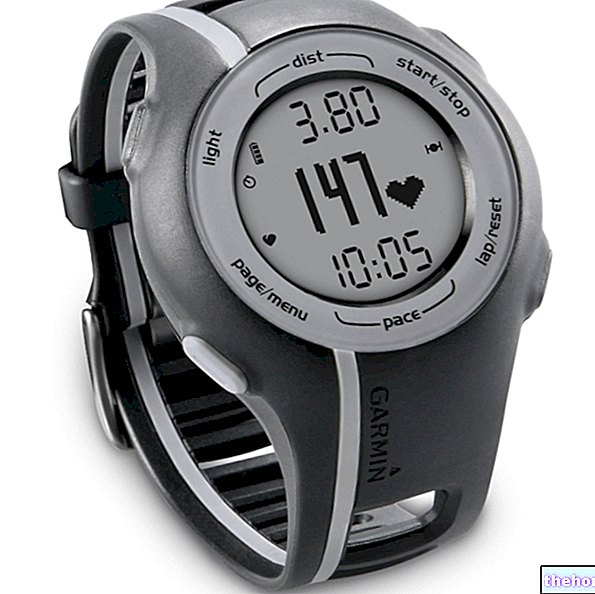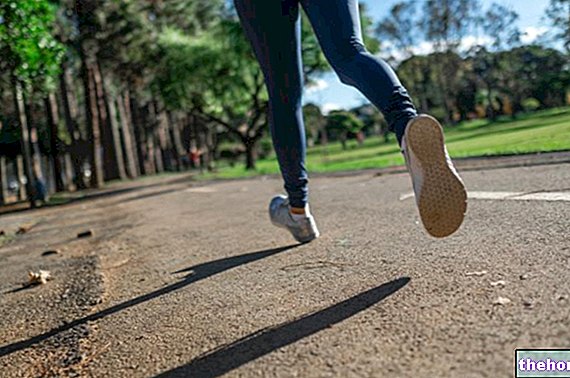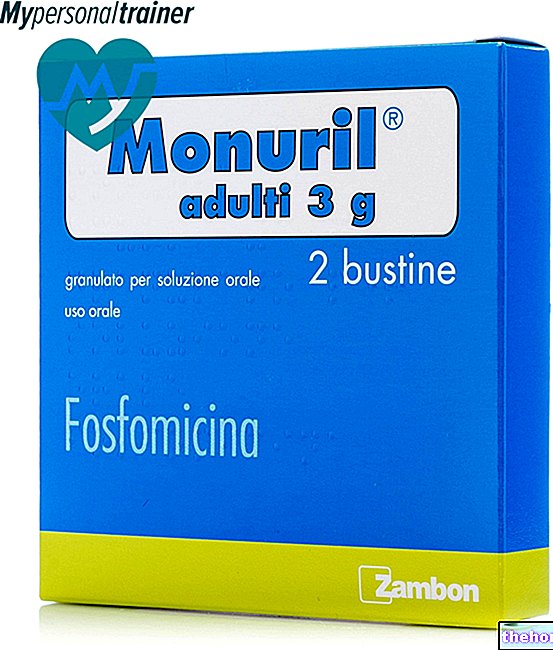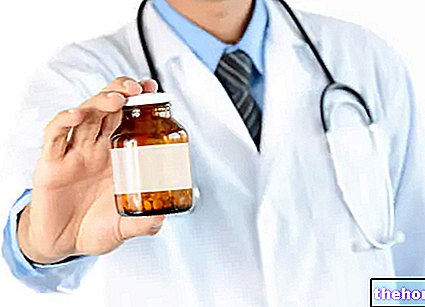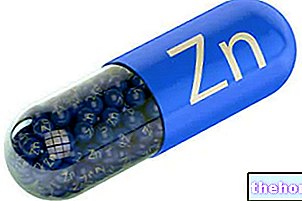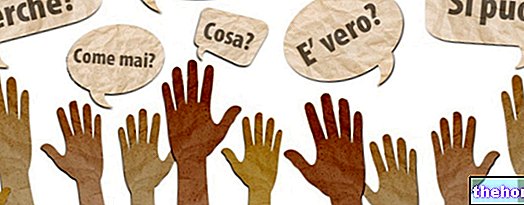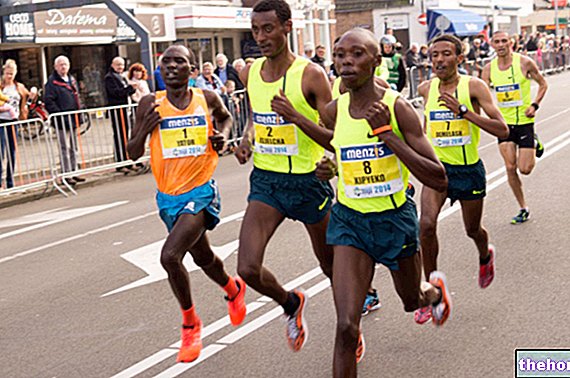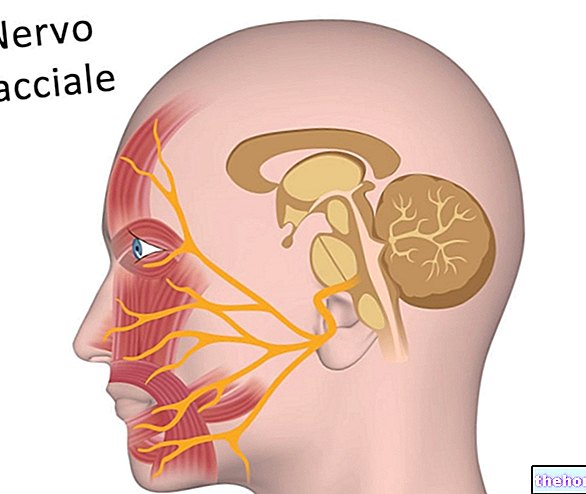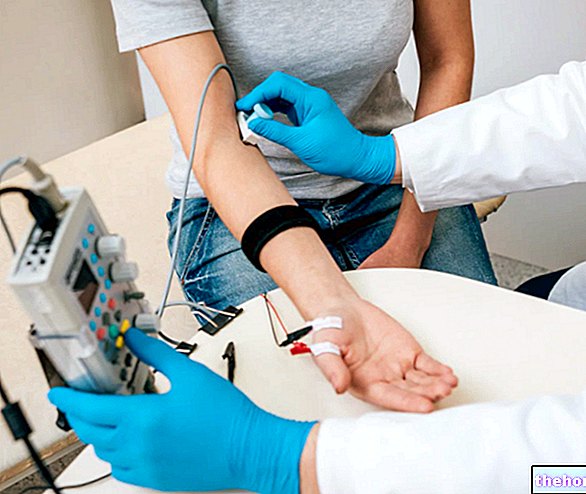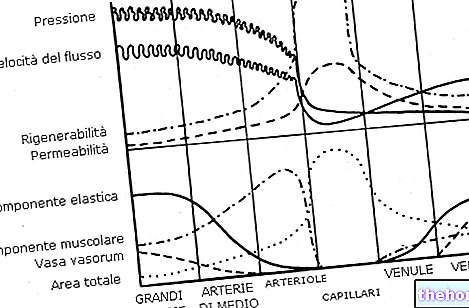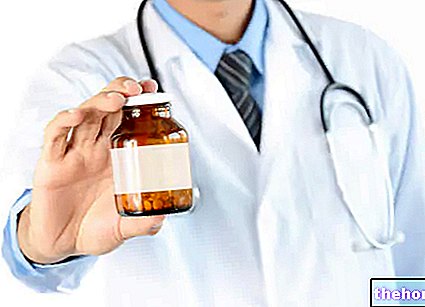Therapy
Those suffering from cardiac arrest need immediate care to survive; therefore, anyone in his vicinity or in his company must give him help as soon as possible.

Figure: the cardiac massage is performed by compressing the chest with two hands, one on top of the other.
The first thing a rescuer must do is call 118, to summon the specialized hospital staff on site and receive information on what to do; the second thing is to practice defibrillation (if you have the appropriate instrument) and cardiopulmonary resuscitation (CPR), in order to keep the most important organs of the body alive and avoid their permanent damage.
Once medical help arrives, they will take care of the person affected by cardiac arrest, taking them to the hospital and subjecting them to the most appropriate therapies.
CARDIOPULMONARY RESUSCITATION (CPR)
Cardiopulmonary resuscitation (CPR), if performed immediately, can be instrumental in saving the lives of individuals prone to cardiac arrest, heart attack, drowning or suffocation.
Its execution, in fact, allows the oxygenated blood to reach the different organs of the body, primarily the brain, and keep them alive.
CPR consists of alternating the so-called cardiac massage with artificial respiration. Cardiac massage, performed with strong manual compressions in the chest, simulates the pumping action of the heart; while artificial respiration, carried out mouth to mouth and with the patient's nostrils closed, allows the introduction into the airways again oxygen.
Rescuers inexperienced in CPR will receive all the necessary information when they call 118. Furthermore, they will be advised to practice a continuous cardiac massage, at 100 compressions per minute, until hospital help arrives.
In case of cardiac arrest, is heart massage or artificial respiration more important?
Heart massage is of primary importance, as oxygen remains in the blood for several minutes.
When should CPR be stopped?
CPR should be performed until hospital help arrives or until the rescuer runs out of strength (N.B: heart massage is very tiring). If the rescuers are more than one, they can alternate in the practice of heart massage and in this way rest.
What should be done before artificial respiration?
First of all, the patient's head must be gently tilted backwards, in order to open the airways, and then close the nasal passages, to prevent the air introduced by breathing from escaping from the nostrils.
DEFIBRILLATION
Defibrillation is performed before CPR (if there is an option) to restart the heart and restore normal heart rhythm.
It requires the use of a particular instrument, the defibrillator, capable of emitting electrical discharges.
The electrical discharges emitted are appropriate to the situation, as the instrument is built in such a way as to be able to measure the electrical activity of the heart and recognize ongoing heart problems.
Defibrillators, therefore, can be used by anyone, since it is sufficient to follow the instructions they are supplied with, relating to their operation.
What to do if you don't have a defibrillator?
The rescuer must not be alarmed, but quickly call 118 and immediately dedicate himself to cardiopulmonary resuscitation. The defibrillator is important, but it can save an individual's life with just CPR.
IN THE HOSPITAL
Treatment to stabilize the situation and investigations into the origins of cardiac arrest can only begin after the patient has arrived in the hospital and his heart has started beating again. The most common treatments are:
- Drug therapy based on antiarrhythmics and ACE inhibitors. The administration of these drugs is aimed at restoring and maintaining a normal heart rhythm. The most used antiarrhythmic drugs are beta-blockers (metoprolol), potassium channel blockers (amiodarone) and calcium channel blockers (diltiazem); while the most commonly administered ACE inhibitors are captopril or enalapril.
Risks of processing: Sometimes, they can create other arrhythmias or make pre-existing rhythm disturbances worse. It is important, especially in the first phase of treatment, to monitor the patient's condition step by step. - The implantation of a cardioverter defibrillator (ICD). The ICD is a small defibrillator that is housed in the left chest and connected to the heart via leads. As soon as the heart changes its beat abnormally, it records the change and emits a corrective electric shock, aimed at restoring normal heart rate.
Risks of processing: Sometimes, the instrument may emit electric shocks for no reason. - Coronary angioplasty. It is the surgical procedure, practiced through a catheter, which allows the reopening of the occluded coronary arteries.Clearly, its execution is required when, from the diagnostic tests carried out after cardiac arrest, coronary artery disease has emerged.
Risks of processing: it is an invasive and potentially dangerous procedure, because the catheter passes through the arteries of the body and because a contrast fluid is diffused into the blood vessels. - Coronary artery bypass surgery. It is an alternative to coronary angioplasty, therefore it is also performed when the coronary arteries are occluded or narrowed. Its purpose is to "build" an artificial bridge (bypass), which avoids the obstacle present in the coronary arteries.
Risks of processing: it is an invasive procedure, because it involves a direct intervention on the heart. - Radiofrequency cardiac ablation. It involves the use of an electrocater, called an scaler, which, once conducted to the heart, is able to destroy the area responsible for the arrhythmia. For any further information in this regard, it is advisable to see the article on cardiac ablation.
- Corrective surgery for heart defects. It is the surgery to correct valvular defects (ie heart valves) and dilated cardiomyopathies.
Risks of processing: it is an invasive procedure, because it requires direct intervention on the heart. - Heart transplant. Someone who has suffered cardiac arrest may be an ideal candidate to receive a new heart from a compatible donor.
Risks of processing: it is a highly invasive intervention which, even when it is successfully concluded, is at high risk of rejection.
Prognosis
Without adequate treatment, cardiac arrest is almost always fatal. The survival rate, in fact, is only 2%.

Figure: An implantable cardioverter defibrillator, or ICD
Furthermore, even when the treatments are given in time, there is a fair chance that complications, such as coma, will arise, or that the patient will suffer permanent and highly debilitating brain damage.
Prevention
For individuals at risk of cardiac arrest, the doctor advises to adopt a healthy lifestyle (so do not smoke, stay active, stick to a balanced diet, etc.) and undergo regular cardiological checks, in order to monitor the health of their heart. .
In addition, in the case of hypercholesterolemia or diabetes, he recommends the regular intake of drugs suitable for such circumstances; while, in the case of serious heart diseases, he recommends the regular intake of antiarrhythmic drugs and the installation of an ICD, or a cardioverter defibrillator. implantable.
Attention: Family members of people with severe heart disease should learn how to practice cardiopulmonary resuscitation excellently, so that they already know how to deal with a possible episode of cardiac arrest.






